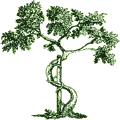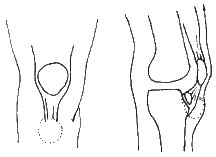
|
|||||||
Osgood-Schlatter Lesion (Disease)

What is it?
Osgood-Schlatter lesion is an overuse syndrome that occurs at the anterior tibial tubercle where the patella tendon inserts. It is probably a combination of injury, stress fracture and inflammation of the immature anterior tibial tubercle. This condition occurs in a child age 10 to 14 years, where the anterior tibial tubercle is still a mixture of growing bone and cartilage, and prone to injury. In a very active child, the tension the patella tendon places on the immature anterior tibial tubercle can be excessive, and leads to repeated injury and persistent inflammation.
What are the symptoms?
The typical patient is a child age 10 to 14 years of age, complaining of localized pain over the anterior tibial tubercle. The area is very tender, and often swollen. Activities like jumping, kneeling and stairs aggravate the pain.
What does your doctor do about it?
Osgood-Schlatter lesion does not cause any X-ray changes, but your doctor may perform X-rays to rule out other problems. Treatment consists of non-steroidal anti-inflammatory medications, and rest. Very often, relative rest is the best your can expect, given the age group of these patients. "Relative rest" means minimizing activities that aggravate the pain. Physical therapy consisting of modalities for pain relief and stretching and strengthening exercises may be helpful in the more severe cases. In kids who are committed to playing sports in spite of pain, a functional brace can help. As long as the child can tolerate the pain, it does no harm to continue playing. (see the AirPro™ Osgood-Schlatter Sleeve)
What of the future?
Osgood-Schlatter lesion is a self-limited condition, i.e., the pain disappears when growth in the anterior tibial tubercle is completed at around 14 years of age. No long term problems are expected, although there have been rare cases where the anterior tibial tubercle stays fragmented and tender even in adult life. In those instances, excision of the tibial tubercle fragment relieves the pain.
NOTICE: The information presented is for your information only, and not a substitute for the medical advice of a qualified physician. Neither the author nor the publisher will be responsible for any harm or injury resulting from interpretations of the materials in this article.
Questions
or comments? Post your thoughts in the Orthoseek
Message Forum!
Find a pediatric orthopedic surgeon
in an area near you.
Home | About Us | Orthopaedic Topics | Message Forum
![]()
Comments, questions, or suggestions are welcome. Please
contact us using this form.